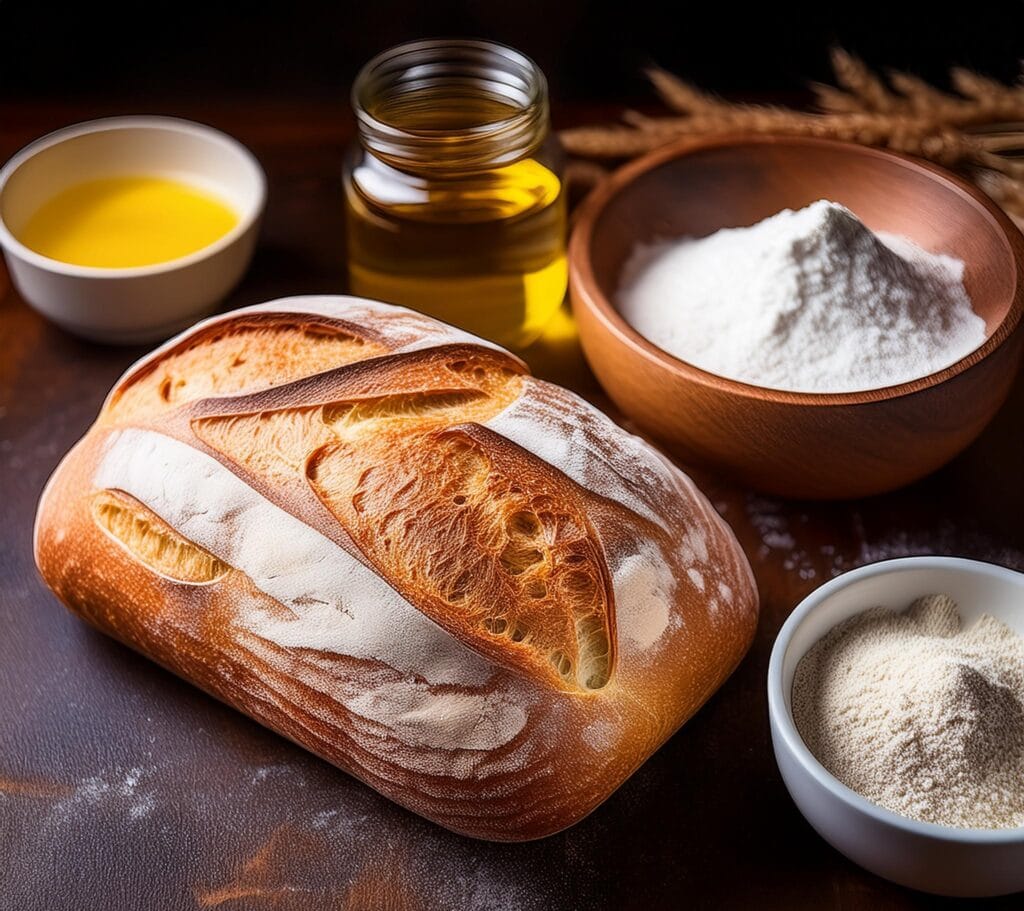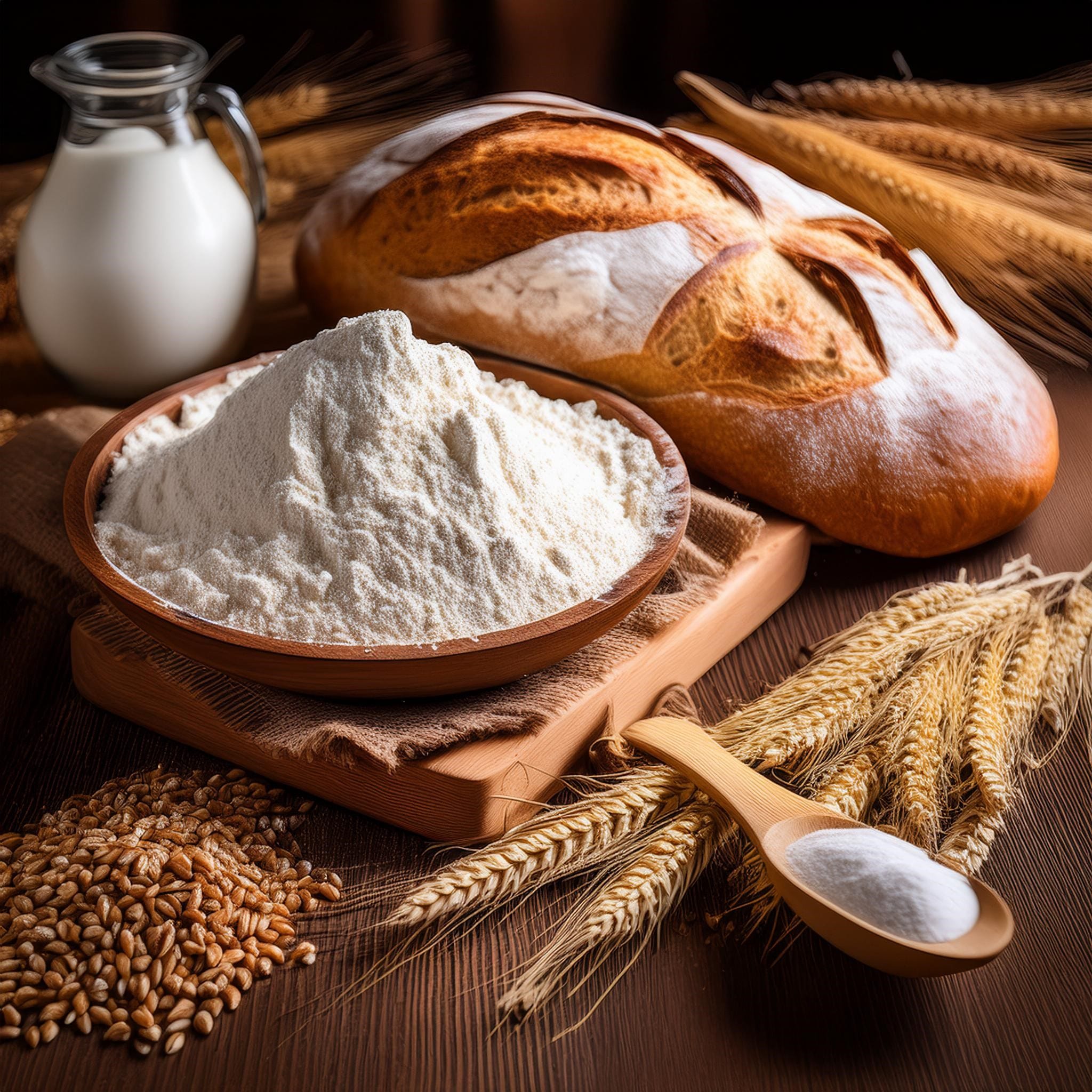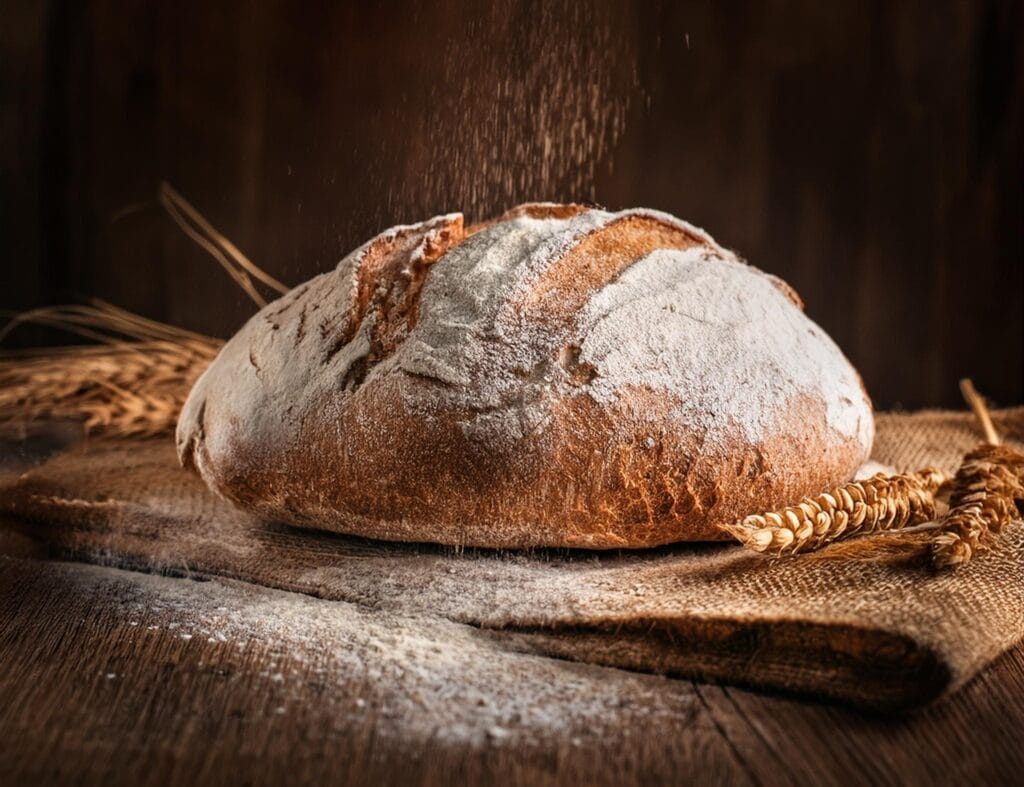Bread flour recipes offer a world of possibilities for baking enthusiasts and home cooks alike. Whether you’re crafting a simple loaf or experimenting with artisanal creations, bread flour is the perfect ingredient for achieving that signature chewy texture and golden crust.
Bread flour recipes can be as simple or as advanced as you’d like, making it a staple in every baker’s pantry. In this blog, we’ll dive into a few must-try bread flour recipes, ensuring you have the tools to create bakery-quality bread at home. Whether you’re making a hearty loaf or soft dinner rolls, these bread flour recipes will satisfy your cravings!
Ingredients:
Classic Bread Flour Loaf
- 4 cups bread flour
- 1 ½ tsp salt
- 1 packet (2 ¼ tsp) active dry yeast
- 1 ¼ cups warm water
- 2 tbsp olive oil
- 1 tbsp sugar

Execution:
How to Make the Perfect Bread Flour Recipes
Step 1: Prepare the Dough
In a large bowl, combine the bread flour, sugar, and salt. In a separate cup, dissolve the yeast in warm water and let it sit for about 5 minutes until foamy. Add the olive oil to the yeast mixture. Gradually pour the wet ingredients into the dry ingredients and mix until the dough comes together.
Step 2: Knead the Dough
Transfer the dough to a floured surface and knead for 8-10 minutes until smooth and elastic. This step is crucial in developing the gluten needed to make your bread rise properly.
Step 3: Let it Rise
Place the dough in a lightly oiled bowl, cover it with a damp cloth, and let it rise in a warm place for 1-2 hours, or until it doubles in size.
Step 4: Shape the Dough
Punch down the risen dough and shape it into a loaf. Place the loaf into a greased loaf pan or form it into a free-form shape on a baking sheet.
Step 5: Second Rise
Let the dough rise again for about 45 minutes to an hour, until it has visibly puffed up.
Step 6: Bake
Preheat your oven to 375°F (190°C). Bake the loaf for 25-30 minutes, or until golden brown and it sounds hollow when tapped on the bottom. Let it cool before slicing and serving.

Tips:
About: Bread Flour Recipes
- Hydration is Key: Always measure your water carefully. Too much water can make the dough sticky, while too little can result in a dense loaf.
- Room Temperature Ingredients: Ensure your yeast and water are at the right temperature to activate the yeast properly.
- Knead Thoroughly: Kneading develops gluten, which gives bread its chewy texture. Don’t rush this step!
- Don’t Skip the Second Rise: The second rise allows the dough to develop flavor and texture, resulting in a fluffier bread.
For more delicious recipes, check out our All Recipes page!
Don’t forget to follow us on Facebook, Instagram, Pinterest, and Twitter to stay updated with our latest content !



